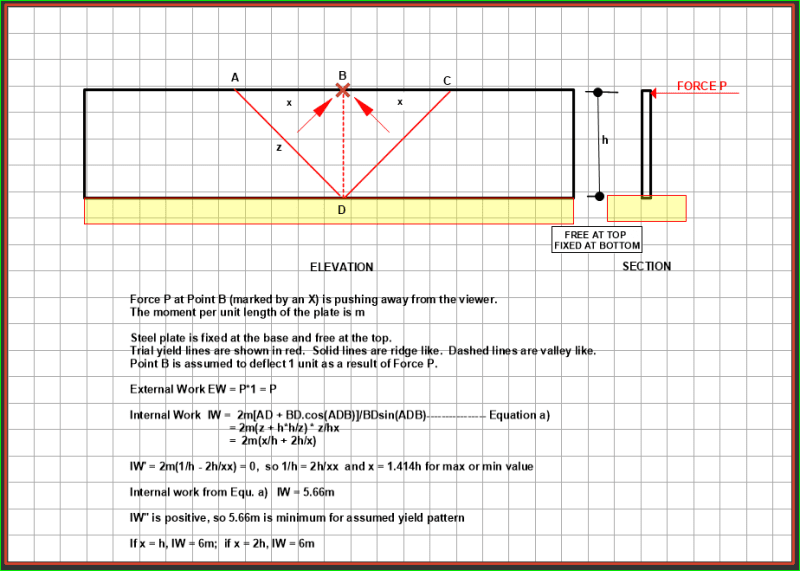AKing92
Structural
- Mar 22, 2018
- 6
I am working on a storefront job where there is a base receptor that is basically a vertical cantilever plate, which resists the load from the mullions. I have used a rule of thumb of 1:1 for the dispersion of the load, which allows a wider plate section to be analyzed for the weak axis bending it sees. Beyond my "feeling" of 1:1, I have also worked with the AISC stair design guide, which uses a specific equation for channels. I believe that would not be valid on a cantilever plate because there is no flange to distribute the load. Any advice on an effective width for a continuous cantilever flat plate in weak axis bending?



